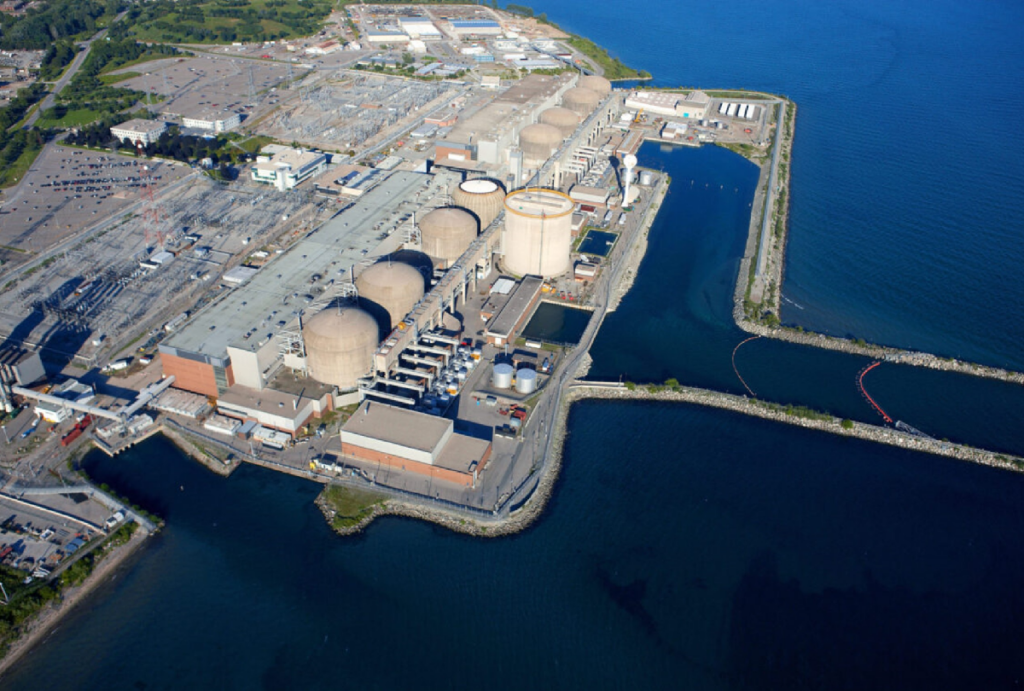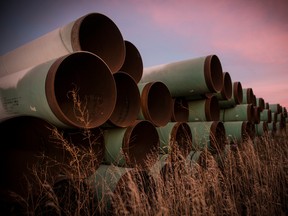Ontario Power Generation planning to extend life of aging Pickering Nuclear Generating Station by decades

PICKERING, Ont. — Ontario Power Generation is moving ahead with a plan to extend the life of the aging Pickering Nuclear Generating Station by decades, as the province tries to secure more electricity supply in the face of increasing demand.
Nuclear big player in getting to Net Zero
“Our province still needs this station and its workers,” he said at a press conference outside the nuclear plant. The construction phase will create about 11,000 jobs, he said, and provide about 6,000 jobs for decades.
OPG plans to spend $2 billion on engineering and design work and securing key components for the project that is expected to be completed in the mid-2030s.
Neither Smith nor OPG officials would give an estimate for how much the entire refurbishment will cost.
“It would be irresponsible at this point in time to put a number out there, because it’s this essential design and scoping and engineering work that is going to get us to the place where we can have a number,” Smith said.
OPG said a refurbishment at its Darlington Nuclear Generating Station is costing $12.8 billion and is on time and on budget.
Ken Hartwick, chief executive of OPG, said the Darlington refurbishment as well as one at Bruce Power will help guide the Pickering life extension.
“We have learned a lot about what it takes to refurbish a nuclear station the right way with thousands of lessons learned from Darlington and Bruce Power that we will apply to Pickering,” Hartwick said.
The four units produce about 2,000 megawatts of electricity, enough to power two million homes.
The Independent Electricity System Operator has said Ontario’s electricity demand is expected to grow by about two per cent each year, but could be even higher. A promise to build 1.5 million homes by 2031 and several large-scale manufacturing investments such as electric vehicle battery plants are helping to push demand higher.
The province needs more supply particularly starting in the mid-2030s, the IESO has said.
Keith Stewart, a senior energy strategist with Greenpeace Canada, said the price of wind and solar power with battery storage has “dropped like a stone” and should be more central to Ontario’s energy policy.
“Any credible independent cost-benefit analysis would find that we should be investing in the renewable-powered energy system of the future, rather than pouring billions more into rebuilding nuclear reactors long past their best-before date,” he wrote in a statement.
Pickering produces about 14 per cent of the province’s electricity but its current licence to operate the four units in question expires at the end of this year. OPG has asked the Canadian Nuclear Safety Commission to extend that to 2026, but a public hearing for that application has not yet been scheduled.
Green Party Leader Mike Schreiner said Greens understand that nuclear power will continue to be part of the energy mix for decades, but the province also needs much more wind and solar power and no more natural gas generation.
“Instead of attracting jobs and investment in low-cost renewables, the Ford government is making Ontario’s grid dirtier and more expensive by prioritizing dirty fossil gas plants and the costly, poor-performing Pickering plant,” he wrote in a statement.
The IESO announced last month that it is looking to add 2,000 megawatts of non-emitting electricity generation online such as wind, solar, bioenergy and hydro to the system. However, it also says natural gas is still required to ensure supply and stability in the short to medium term, though it will also increase greenhouse-gas emissions from the electricity sector.
Ontario’s electricity system was 94 per cent emissions free in 2020, but today that figure has fallen to 90 per cent.
The nuclear safety commission would still have to approve the Pickering refurbishment.
Two other units at Pickering are also set to stop operating at the end of this year. They are part of what’s known as the A units, which came online in the 1970s and were removed from service in 1997. Two of the units were refurbished and began operating again in 2003 and 2005.
Share This:




